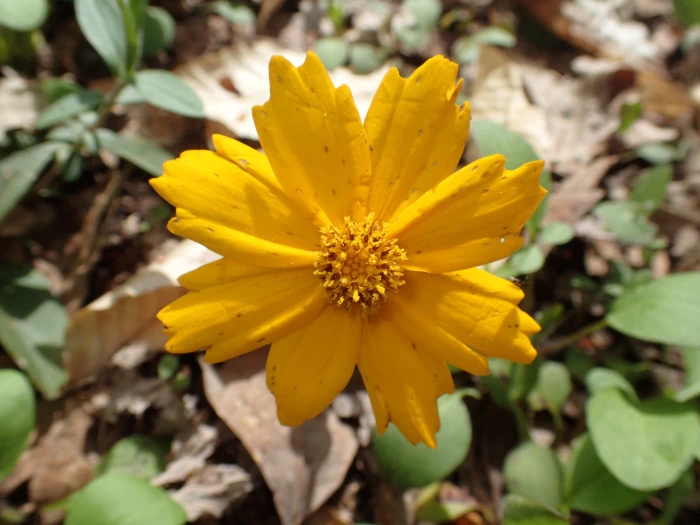Lobed Tickseed
(Coreopsis auriculata)
Lobed Tickseed (Coreopsis auriculata)
/
/

John P Friel
CC BY 4.0
Image By:
John P Friel
Recorded By:
Copyright:
CC BY 4.0
Copyright Notice:
Photo by: John P Friel | License Type: CC BY 4.0 | License URL: http://creativecommons.org/licenses/by/4.0/ | Rights Holder: John P Friel | Publisher: iNaturalist | Date Created: 2018-03-31T13:35:25-07:00 |








































Estimated Native Range
Climate Requirements
| • Precipitation | 17" - 67" |
| • High Temp. | 70°F - 93°F |
| • Low Temp. | 8°F - 47°F |
Summary
Coreopsis auriculata, commonly known as Lobed Tickseed, is a perennial herb native to the southeastern United States, particularly thriving in open woodlands and meadows. It is a compact plant, typically growing between 10 to 30 cm (4-12 inches) tall, and occasionally reaching up to 60 cm (24 inches). The plant forms clumps and has a mounded growth habit, with distinctive rounded yellow flower heads that bloom profusely in spring and early summer, from April to June. The flowers are showy, with ray florets that have yellow laminae 15–20+ mm long, and disc florets with corollas 3.5–4.5 mm long featuring yellow apices. The fruit is a cypsela, a small, brown-black seed 1.5–2.5 mm long, which lacks wings.
Lobed Tickseed is valued for its long blooming period and vibrant yellow flowers, which can add a splash of color to garden borders and rock gardens. It is also used as a blooming ground cover, particularly the dwarf cultivar ’Nana’. This plant is easy to maintain, drought-tolerant once established, and attracts pollinators such as bees and butterflies. In cultivation, it prefers full sun but can tolerate partial shade, and it requires well-drained soil with medium moisture. While generally disease-resistant, it can be susceptible to powdery mildew in humid conditions. It is not known for aggressive roots or significant pest problems.CC BY-SA 4.0
Lobed Tickseed is valued for its long blooming period and vibrant yellow flowers, which can add a splash of color to garden borders and rock gardens. It is also used as a blooming ground cover, particularly the dwarf cultivar ’Nana’. This plant is easy to maintain, drought-tolerant once established, and attracts pollinators such as bees and butterflies. In cultivation, it prefers full sun but can tolerate partial shade, and it requires well-drained soil with medium moisture. While generally disease-resistant, it can be susceptible to powdery mildew in humid conditions. It is not known for aggressive roots or significant pest problems.CC BY-SA 4.0
Plant Description
- Plant Type: Herb
- Height: 0.5-0.8 feet
- Width: 0.5-0.8 feet
- Growth Rate: Moderate
- Flower Color: Yellow
- Flowering Season: Spring, Summer
- Leaf Retention: Evergreen
Growth Requirements
- Sun: Full Sun
- Water: Medium
- Drainage: Slow, Medium
Common Uses
Bee Garden, Bird Garden, Border Plant, Butterfly Garden, Deer Resistant, Drought Tolerant, Groundcover, Hummingbird Garden, Low Maintenance, Potted Plant, Rabbit Resistant, Rock Garden, Showy Flowers, Street Planting
Natural Habitat
Native to open woodlands and meadows in the southeastern United States
Other Names
Common Names: Mouse-Ear Tickseed, Musöga
Scientific Names: Coreopsis auriculata, Coreopsis diversifolia, Coreopsis auriculata var. auriculata, Coreopsis auriculata var. diversifolia, Cymbaecarpa auriculata
GBIF Accepted Name: Coreopsis auriculata L.